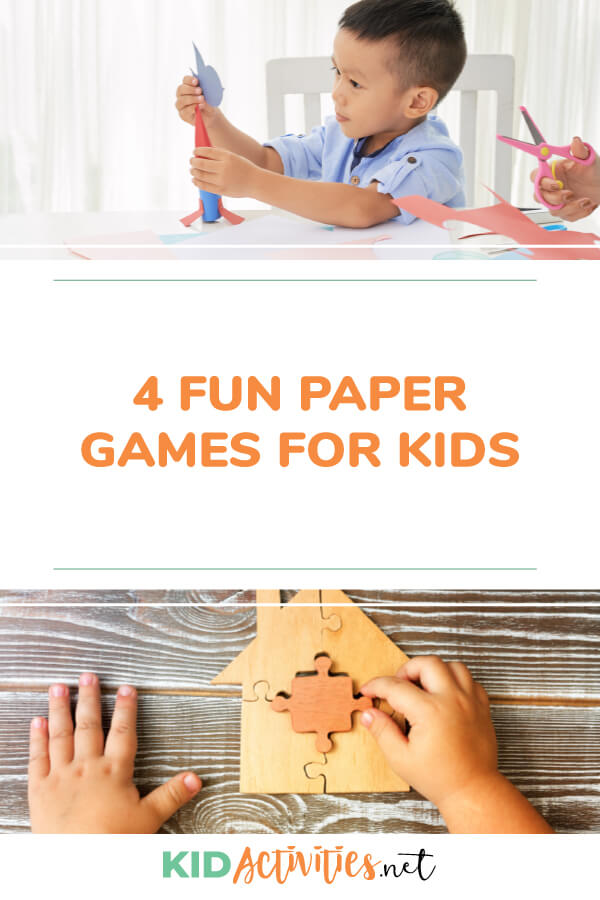Looking for some fun pen and paper games for kids to play at home or in the classroom? You just found it
In the age of technology, it can be easy to become glued to a glowing screen for hours. Sure, kid’s tablets and televisions offer hours of entertainment in the form of videos, movies, and interactive games.
However, this technology-based entertainment can be mind-numbing. According to an article by the Iowa State Daily, technology, while sometimes used for creative purposes, often serves as a distraction and suppresses original thoughts.
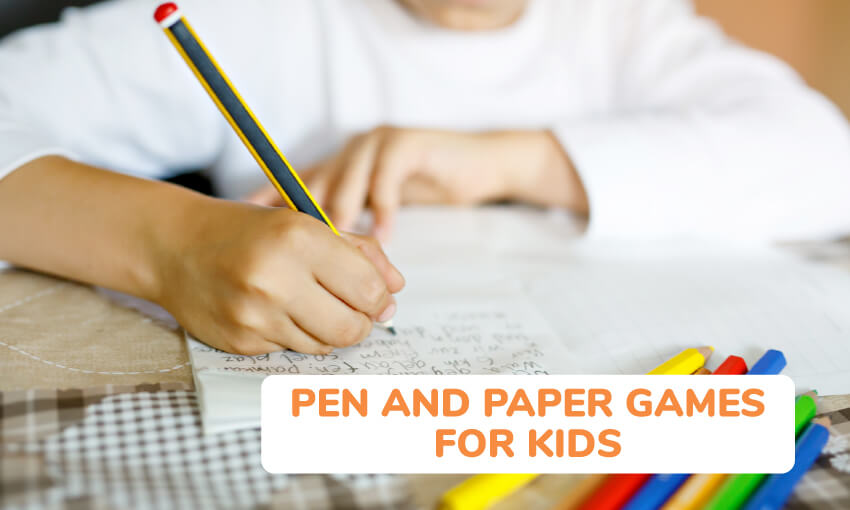
That’s why we’re offering you with 5 on-paper games your kids can play. These games are simple to set up and offer hours of entertainment. These games:
- Encourage critical thinking.
- Improve social bonds with siblings and peers.
- Enhance communication skills.
Below, you can explore these 5 paper games for kids in detail!
Paper Games for Kids
1. Pictionary
Pictionary is a classic on-paper game. It’s sold as a board game but can also be played with just a pen and paper. Today, we’ll cover how to play Pictionary with the purchased board game set.
Learn about the history of Pictionary and how to play this beloved on-paper game below.
History of Pictionary
This game was released in 1985 by Angel Games Inc. It’s classified as a word-guessing game and is loosely based on charades.
Hasbro purchased the rights to Pictionary in 1994 and eventually sold its rights to Mattel. Today, Pictionary is sometimes played with a whiteboard and dry erase marker.
However, it has its origins with pen and paper. It’s played by millions of people around the world and has inspired the release of different versions like Pictionary Jr and Disney Pictionary.
Game Pieces
When purchased as a board game, Pictionary comes with:
| A one-minute sand timer | Four colored game pawns |
| A numbered dice | Category cards for reference |
| Small pencils and paper or a whiteboard and dry erase markers. | Clue cards |
Objective
This is a drawing game, but non-artists shouldn’t shy away from it. Doodles and stick figures are welcome! These amateur drawings make the game funnier and more exciting.
The object of the game is to correctly guess what the artist is attempting to draw. Each correct answer allows the guessing team to advance their pawn closer to the final square. The team to reach the final square first wins!
Each clue card has 5 words on them that fall into these different categories:
- All Play: Any word or expression.
- O: Object.
- A: Action or event.
- P: Person.
- D: Difficult words.
Set-Up
Before beginning, teams must be made. Pictionary is ideally played with four people in teams of two. Adjustments can be made depending on the size of a group. UltraBoardGames recommends fewer teams with more people per team.
To set up the game, follow these steps:
- Lay out the Pictionary board.
- Place the box of clue cards in the middle of the board.
- All teams select a pawn to use throughout the game and place it on the start square.
- Each team should decide on one person to be the first artist for their team.
- Determine if there will be any special rules. Do plural and singular guesses need to be made distinct? How accurate do guesses need to be? For example, will the answer “football” be accepted if the word is “ball”?
How to Play Pictionary

Follow these steps for playing this drawing-based paper game:
- Each team rolls the dice to determine who selects the first card. The team that rolls the higher number gets this chance.
- The team that rolled the higher number selects a clue card. The first word played is always an “All Play” word.
- Allow both teams’ artists to see the “All Play” word on the card that’s drawn.
- Give the artists five seconds to think about what they’re going to draw.
- After five seconds have passed, start the timer.
- The artists have one minute to draw their answer. No numbers, gestures, words, or verbal clues may be given.
- The first team to guess the word correctly takes control of the dice.
- The team that guessed correctly rolls the dice and advances that number of spaces.
- The team then takes its next turn. A new artist draws the word based on the space they landed on.
- If the word is guessed correctly, the team gets to roll the dice again. If not, it is the next team’s turn.
- Keep alternating turns until one team reaches the Finish square. The word must be guessed correctly for the team to take the win.
General rules to keep in mind:
- When any team lands on an “All Play” square, all teams participate in that turn. The winning team takes possession of the dice.
- An X can be used only to cross something out and not as a letter.
- Players can’t use pre-arranged clues. Board Game Capital warns against using this type of cheating, as it gives teams an unfair advantage.
- Players can use as many pieces of paper as they want for each turn.
2. Scattergories
Scattergories is one of the most popular pen and paper games for kids.
It involves quick and innovative thinking. Encourage creativity by getting your kids involved with this game!
This game can be played without the board game set, but we’ll focus on the rules for the specific game sold by Hasbro Gaming.
Learn more about this game’s history and how to play it below.
History of Scattergories
Scattergories was released by Parker Brothers in 1988. The company came under the ownership of Hasbro in the early 1990s. Hasbro made the game popular on the international level for millions of people to enjoy. The game is based on the traditional French game Jeu du Baccalauréat.
Game Pieces
This board game comes with the following pieces:
- 20-sided dice with 20 letters of the alphabet (excludes the letters Q, U, V, X, Y, and Z).
- One-minute sand timer.
- Pre-made lists with 12 categories each.
- Paper pads.
Players usually provide their own pens or pencils.
Objective
The object of the game is to score points by naming objects, all beginning with the same letter, within a group of categories.
Set-Up
This game doesn’t require much set-up. Simply arrange the lists in a pile so each player can reach them. Hand out paper and writing utensils before getting started. Two to six players can participate.
How to Play Scattergories
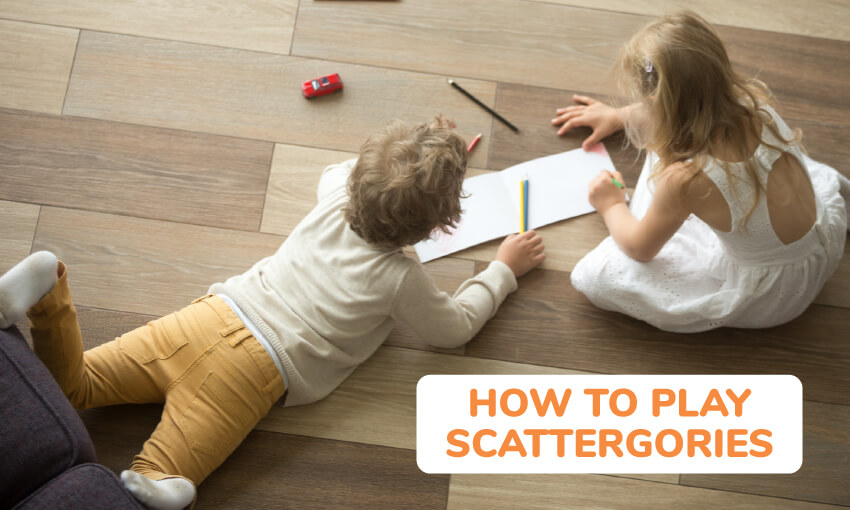
- All players must agree on a list to start with.
- One player rolls the dice. The letter that the dice lands on is to be used during that round.
- The timer is turned upside-down and players have one minute to write their answers. Each answer must start with the letter that was rolled. For example, if the letter was “M,” an acceptable answer for the category “restaurants” would be “McDonald’s.”
- When the timer runs out, all players must stop writing.
- Each player reads their answers out loud. One point is awarded for each unique answer. If two or more players duplicate an answer, no points are awarded.
- After points are calculated, a new round begins. A new letter is rolled and a new list is chosen.
- Three rounds are played for each game of Scattergories. The player with the most points at the end of the three rounds wins the game.
Other rules to keep in mind:
- Alliteration is allowed and encouraged. Players with answers like “Herbert Hoover” and “The Great Gatsby” are awarded two points for that category.
- Broad interpretation and creativity are allowed. If there is a disagreement, How Do You Play It recommends that players talk out their answers.
3. Paper Telephone
History of Telephone
You’re probably familiar with the game Telephone. Players start by sitting in a circle. One person begins by coming up with a phrase in their head. It usually is just one sentence and can be about anything.
The player who came up with the phrase then whispers it into the ear of the person next to them. Then, that person whispers what they think they heard to the next person.
This continues all the way around the circle. The final person whispers their version of the phrase to the first person. The first person repeats it out loud for everyone to hear.
The goal of the game is to have the original phrase come back intact to the first person. However, this is rarely the case. Especially if there’s a lot of players, the phrase tends to get jumbled up. It’s a simple, fun game that usually gets a lot of laughs.
How to Play Paper Telephone
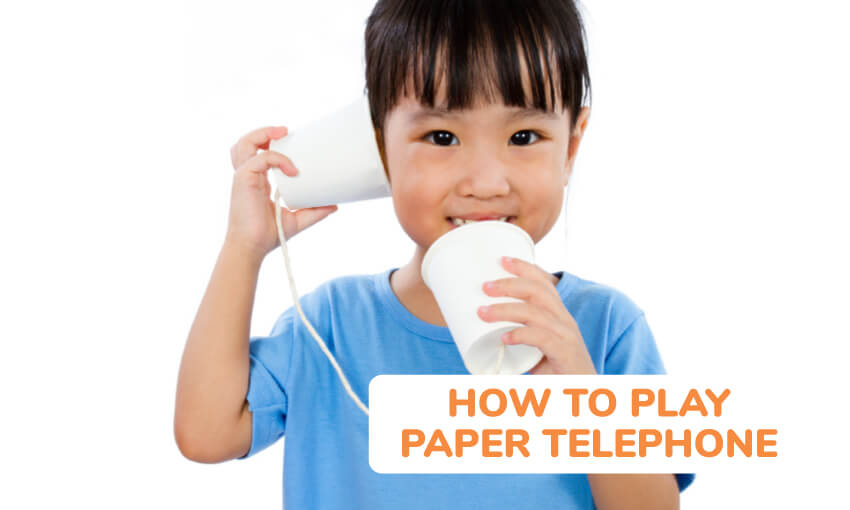
Paper Telephone puts an interesting twist on this classic game. It is a bit more intricate and great for older players.
According to The Game Gal, it is best to play with 6-10 people. Everyone starts by sitting in a circle. Each person gets a paper and writing utensil. Start by having everyone write their name small in the bottom corner. Then, everyone should write a sentence at the top of the paper.
Once that’s done, players pass their papers to the right. Each person reads the sentence and attempts to draw a picture based on it. They should then fold the paper so that the original sentence is covered up. Again, players pass the papers to their right.
Now, the person should try to write a sentence describing the picture. They should fold the paper to cover up the picture and, once again, pass the paper to the right.
This pattern continues until there is no room on the papers or until the paper reaches its original owner. At the end of the game, players compare the final sentence/picture to the original sentence. It is entertaining to see how much the meaning of the original sentence gets distorted.
4. Battleship Paper Game
Do you not own the classic, beloved Battleship board game? No problem! This suspenseful kids game works well as a paper game for kids.
As Art of Manliness points out, you don’t have to worry about losing tiny pegs or keeping track of the game board.
It can only be played with two players, so it’s great for siblings or a one-on-one play date. Learn about how to play below.
The Ships
Each player should know the ships they have before starting:
- 1 aircraft carrier: 5 squares.
- 1 battleship: 4 squares.
- 1 submarine: 3 squares.
- 1 cruiser: 3 squares.
- 2 destroyers: 2 squares each.
Set-Up
Set up the game using these steps:
- Each player gets their own piece of paper.
- They each draw two 10×10 grids on their paper.
- One grid is labeled “My Ships” and the other is labeled “Opponent’s Ships.”
- Each square on the horizontal axis is labeled 1-10 from left to right. Each square on the vertical axis is labeled A-J from top to bottom.
- On the “My Ships” grid, each player sets up their ships in any way they want. Keep in mind that ships can run vertically or horizontally, just not diagonally.
How to Play Battleship on Paper
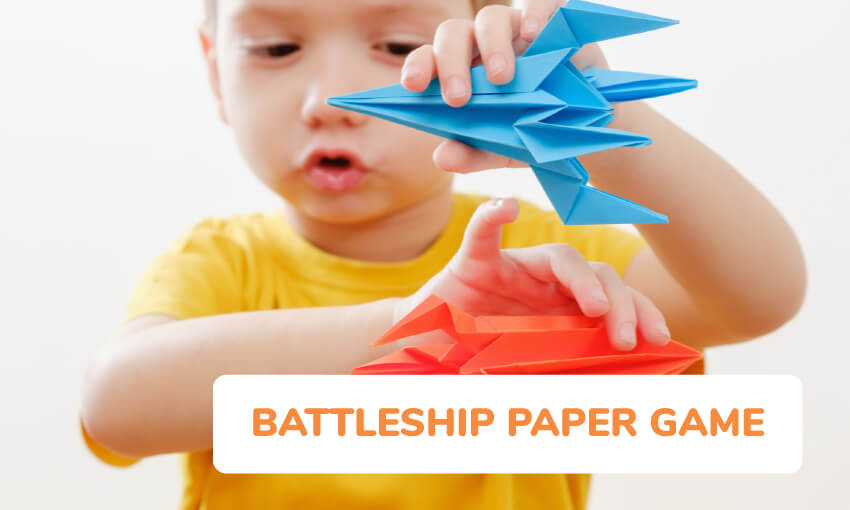
Once each player draws out their fleet, game-play can begin:
- Decide on who goes first. The first player calls out a square’s coordinates to try to “hit” their opponent’s ships. Examples of coordinates that can be called out are G3, A5, or E6.
- The opponent says “Hit!” if the coordinate hits their ship. If it doesn’t, the opponent calls out “Miss!”
- Each player records their own shots on the “Opponent’s Ships” grid and their opponent’s shots on the “My Ships” grid. On the “Enemy’s Ships” grid, use “O” to mark a hit and “X” to mark a miss.
- On their turn, each player gets to call out one coordinate. There are different versions of the game in which players can have different numbers of shots. One version allows players to call as many shots as the number of ships they have remaining.
- The first player to sink all of their opponent’s ships wins.
5. Spaceman
This is a more kid friendly version of the popular and old familiar game hangman.
The main difference is that the kids don’t have to draw a stick character with the rope around its head. So this is better.
The rules of the game are the same though, so everyone should know how to play it by heart.
How to play Spaceman
One kid out of the group needs to think of a word, and draw lines on the page for the number of letters in the word or phrase.
The game starts when every kid in the group tries to guess a letter, if the letter is on the word, the kid needs to write it down on the appropriate line, if the letter does not appear in the word or phrase, the kid needs to draw a head of the spaceman.
They keep this up until the guess the entire phrase or word or until the kid draws the entire spaceman and then the group has lost the game.
Give These Paper Games a Try!
The next time your kids are stuck inside on a rainy day, encourage them to try one of these games. They’re also great for long road trips or for when you want your kids off their electronic devices.
Do your kids know about the traditional paper craft and game known as “cootie catcher?” If not, show them how to make a cootie catcher.
You can join in on these games, supervise, or allow your kids to play them on their own.
Take an old-fashioned approach to entertainment by with these simple and engaging paper games for kids! Make sure you check out our paper airplane games or pen spinning tricks.
